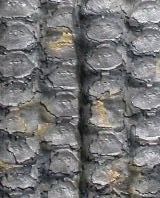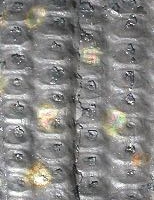Back
Leaf scars
The form of the leaf scars is mostly oval or hexagonal. If the scar
is more or less pear-shaped, the narrower side is the upper one. Slightly
above the center are three dotlike or elliptical impressions. The middle
one (V) is the remainder of the vascular bundle to the leaf. The two outer
ones (P) are scars of the so-called parichnos: a system of tubes through
the entire tree probably for providing contact with the open air.
Near the upper margin is the scar (L) of the ligule, a very smal additional
leaf, characteristic of all clubmoss species. |
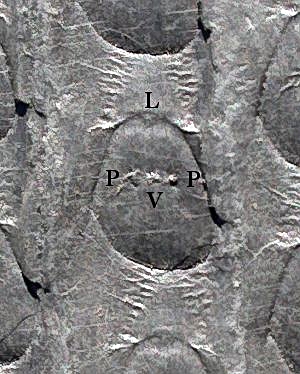 |
Only leaf scars from the outside of the trunk can be identified. Leaf
scars formed towards the inside, are very similar for all species.
Outside and inside of the same piece of bark. The left specimen can be
identified, the right one can't.
Characteristic of Sigillaria is the fact that the leaf scars
are arranged in longitudinal rows (though they are also arranged spirally).
Mostly the scars are located at ribs separated by straight or undulating
furrows.
The subgenus Eusigillaria, to which most of the species belong, is
divided in two groups:
- Rhytidolepis, in which the rows of leaf scars are separated by clear
ribs
- Favularia, in which the leaf scars are standing close together in
a honeycomb-like structure.
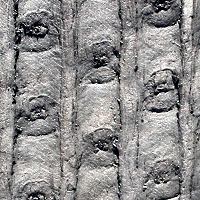
Group Rhytidolepis |
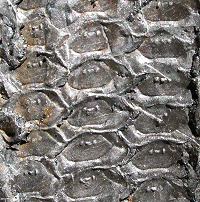
Group Favularia |
Besides this there is the subgenus Subsigillaria, to which some
species from the Stephanian and the Permian belong. These lack longitudinal
ribs.
Top

